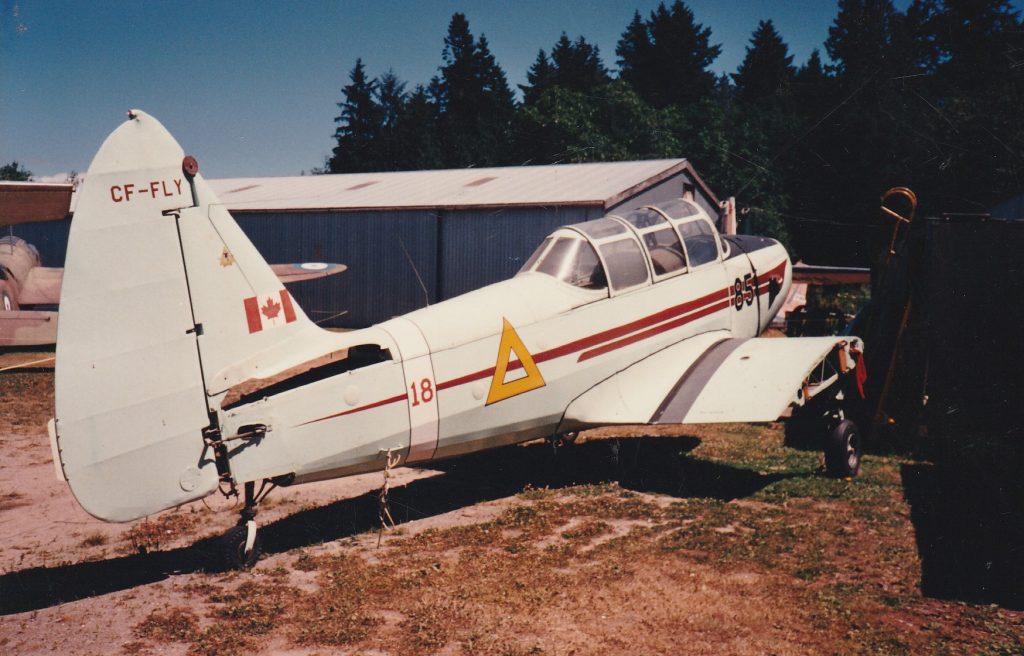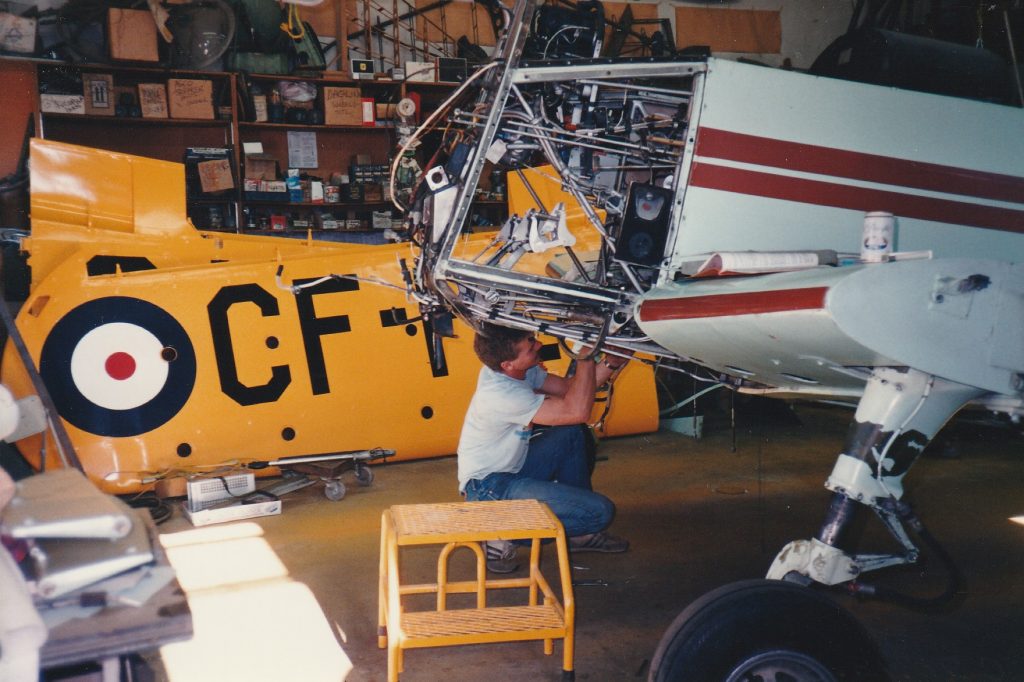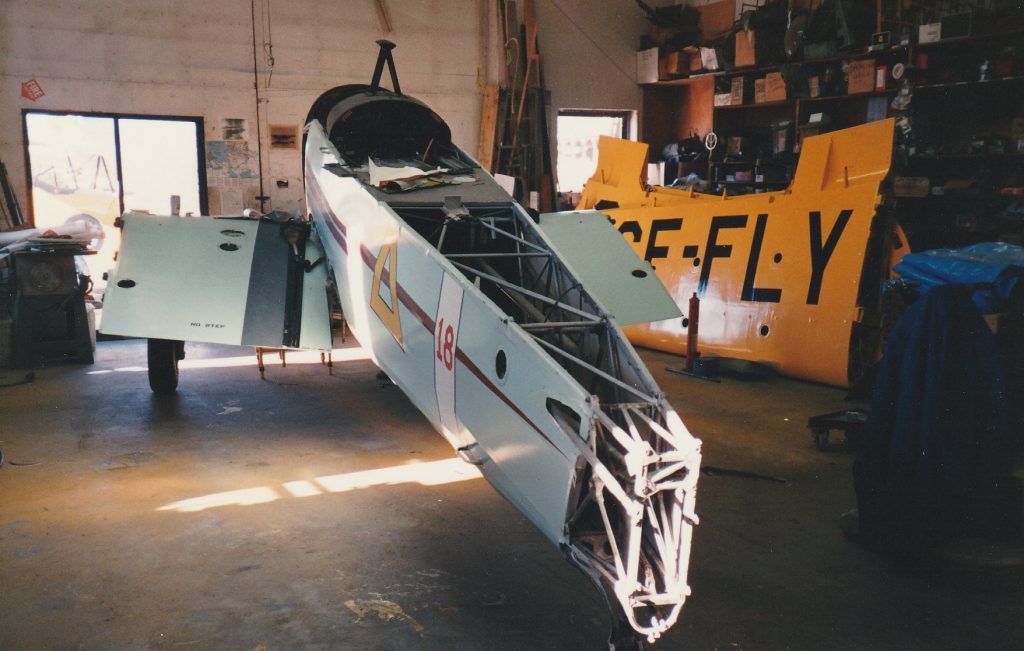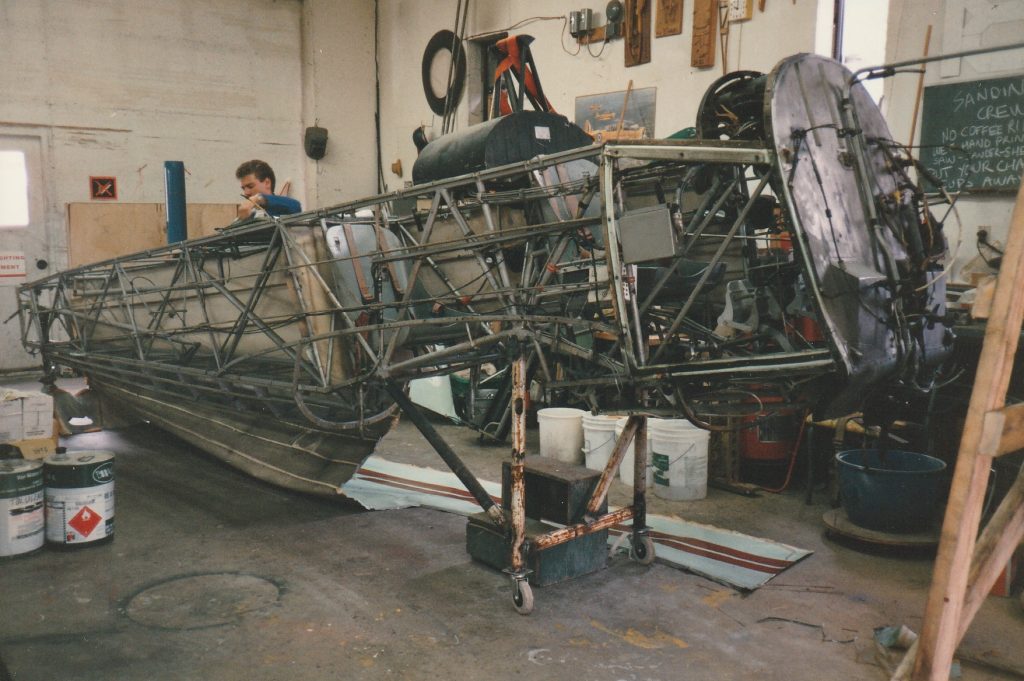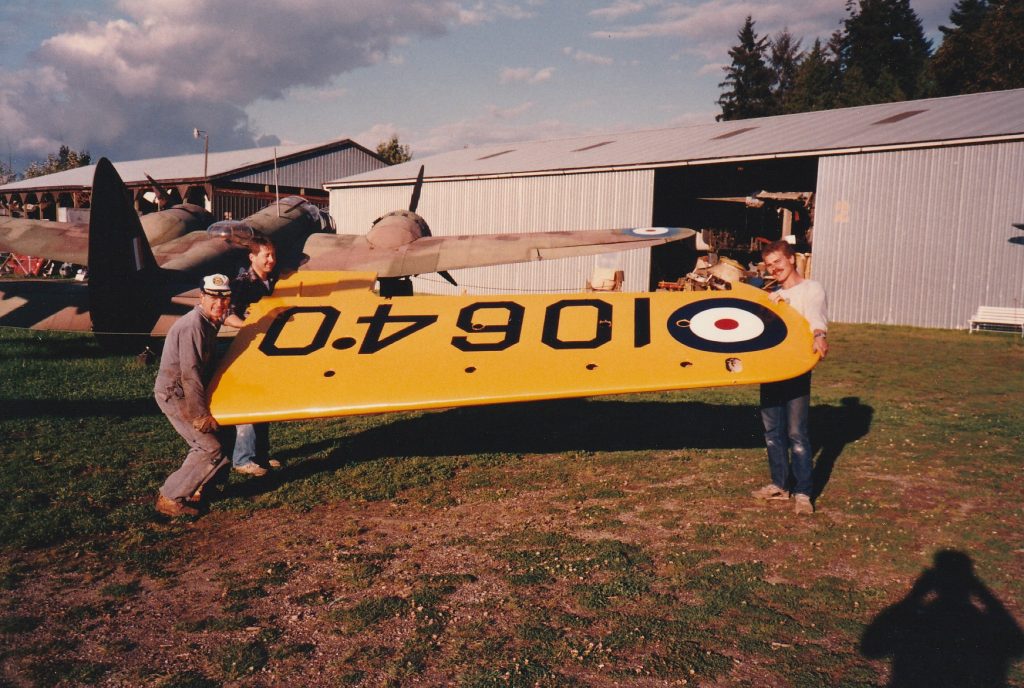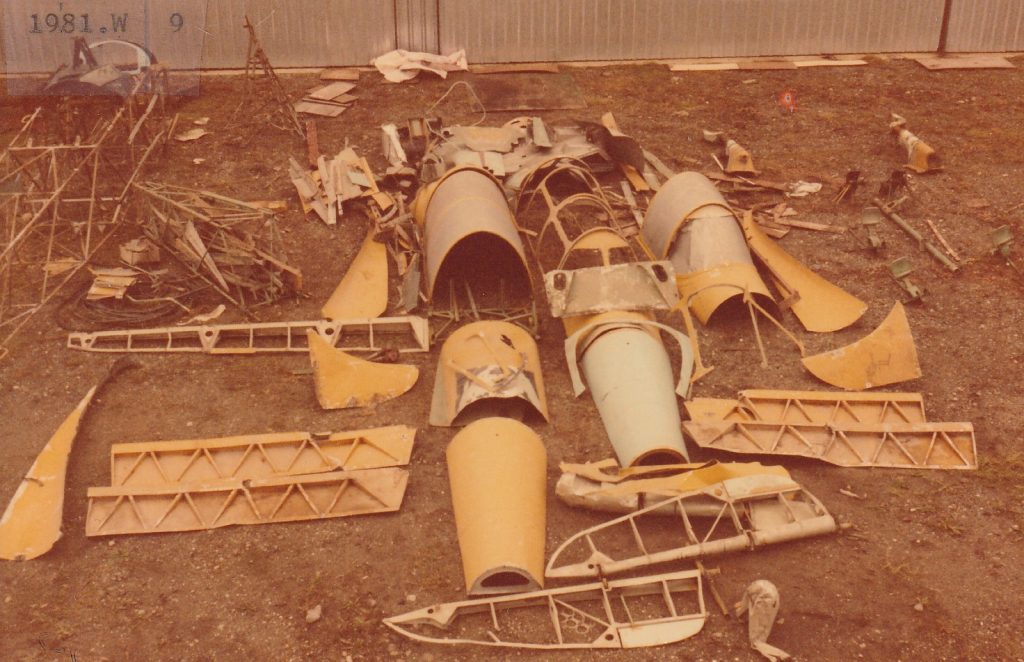Fairchild PT-26B Cornell
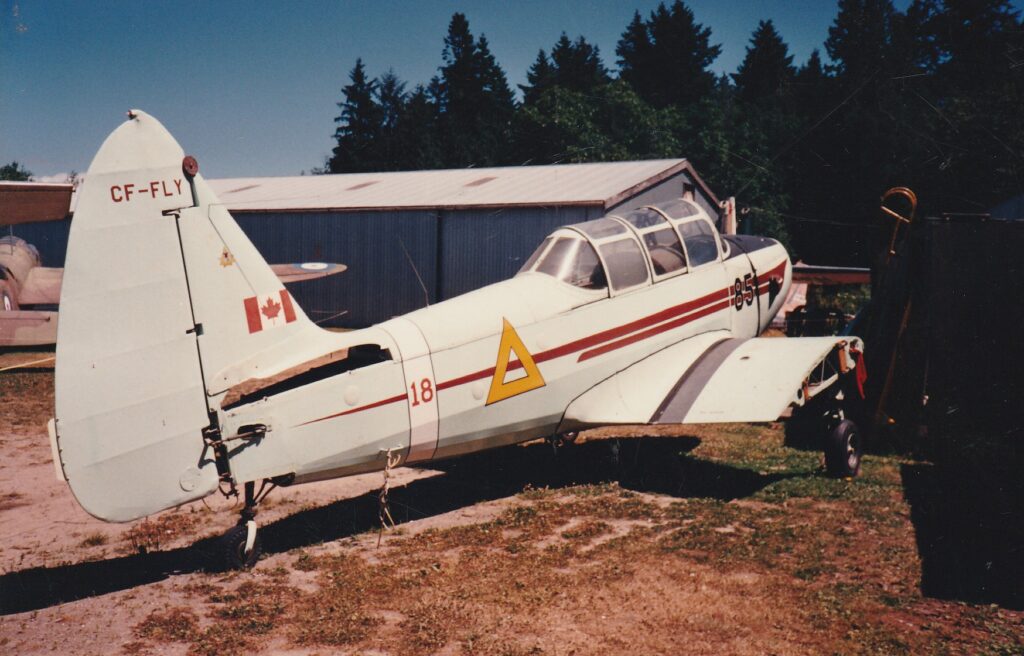
General Description
The Fairchild Cornell was developed in the early 1940s as a rugged, reliable primary trainer for military pilots during the Second World War. Originally designed and built by Fairchild Aircraft in the United States as the PT-19 The Fairchild Cornell was a simple, low-wing monoplane with tandem open cockpits, ideally suited for training new pilots in basic flight skills. It was powered by a Ranger inline engine and designed for rapid, economical production; a critical advantage during wartime. Structurally, the Cornell featured a fabric-covered, welded steel tube fuselage, with the center section, outer wing panels, and tail assembly being primarily made of plywood. The control surfaces had metal framing covered in fabric, and the fixed landing gear. With its wide wheelbase the Cornell provided excellent ground handling. Along with its forgiving flying characteristics and reliable performance, the Cornell was forgiving and stable both in the air and on the ground.
To meet the needs of the British Commonwealth Air Training Plan (BCATP), the Royal Canadian Air Force adopted a Canadian-built version of the aircraft, manufactured under license by Fleet Aircraft of Fort Erie, Ontario. Designated the Cornell II in RCAF service, it replaced the older Fleet Finch and Tiger Moth biplanes and became the standard elementary trainer in Canada from 1943 onward to 1948, when it too was replaced, this time by the de Havilland DHC-1 Chipmunk. A total of 2,853 Cornells were built by Fleet Aircraft; 1,565 for the RCAF and 1,288 for the RAF. Its forgiving handling characteristics and reliable performance helped prepare pilots for the more advanced stages of military flight training.
The Cornell and its variants were operated by 23 different militaries around the world for elementary pilot training. In Canada, the Cornell became the backbone of the RCAF’s primary pilot training schools starting in 1942 and it remained in service until it was replaced by the de Havilland Canada DHC-1 Chipmunk in 1948.
Many Cornell’s and PT-26’s are still in existence, and reports suggest that nearly 100 Cornells and their variants are still operated around the world in flying condition. Our Cornell, CF-FLY will eventually be restored to flying condition and will join the ranks of the flying examples.
Our Fairchild M62A-3 Cornell
Our Cornell was built in early 1943 by Fleet Aircraft in Fort Erie, Ontario and subsequently delivered to RCAF No. 2 Training Command in April of 1943. It was overhauled to Mid-West Aircraft in Winnipeg, Manitoba 1944 and then sent to storage with No. 2 Training Command when work was completed. With WWII winding down, it was moved to and stored at No. 4 Surplus Equipment Holding Unit (SEHU) at Estevan, Saskatchewan on 27 November 1945. It was then struck of strength from the RCAF 21 August 1046. Unlike many Cornells that were either scrapped or sold to farmers who subsequently dismantled them for their hardware, our Cornell was purchased from the RCAF and kept in flying condition by civilian owners.
The Cornell was purchased from War Assets by W. Lannon and L. Wallace of Richmond, BC, registered as CF-FLY, and was based at Delta Heritage Air Park. While in civilian use the Cornell was stripped of its BCATP yellow paint scheme and painted in baby blue with big triangles painted on both sides of its rear fuselage, where a military roundel would normal be placed. The triangle symbol was a common feature amongst the airplanes owned by members of the Delta Air Park pilot community. You can still see a similar triangle on our museum’s SE5a replica, as it too was based at Delta Air Park around the same time. The Cornell graced the skies over the Fraser Valley from the early 1950’s up until the 1980’s when it was taken out of service for an engine overhaul.
In 1990, the aircraft was purchased by museum founding director Barry Jackson, who then donated it to the Canadian Museum of Flight. A full restoration began as soon as the Cornell arrived at the museum. The engine was overhauled, and it is now displayed in the museum hangar beside the Westland Lysander. Both wings were fully restored and repainted in RCAF colours and markings. The fuselage was then stripped down in preparation for a complete rebuild, but the museum’s move from Crescent Beach to Langley Airport interrupted the process. Since then, the restoration has been on hold. All of the Cornell’s components are now stored off-site in a shipping container, awaiting the space and funding needed to complete the project. Once restored, the Cornell will help the museum tell the story of the British Commonwealth Air Training Plan and illustrate the evolution of training aircraft design over the years.
The Canadian Museum of Flight is dedicated to preserving Canada’s aviation heritage, from rare artifacts to the very aircraft that shaped our history. Your support directly helps restore and maintain this aircraft, ensuring it can be shared with the public and inspire future generations to reach for the skies. Every gift makes a lasting impact — join us in bringing this restoration to life. Donate Now!
Technical Details:
- Serial: FC 141, RCAF 10640, CF-FLY
- Engine: 200 hp Ranger L-440-C5 6 cylinder inline; inverted
- Maximum speed: 122 mph (195 km/h)
- Cruising speed: 101 mph (162 km/h)
- Empty weight: 2022 lb (918 kg)
- Maximum weight: 2736 lb (1242 kg)
- Span: 37 ft (11.2 m)
- Length: 28 ft 8 in (8.4 m)
- Height: 7 ft 7 in (2.3 m)
- Wing area: 200 sq ft (18.6 sq m)
- Service ceiling: 13,200 ft (4,023 m)
